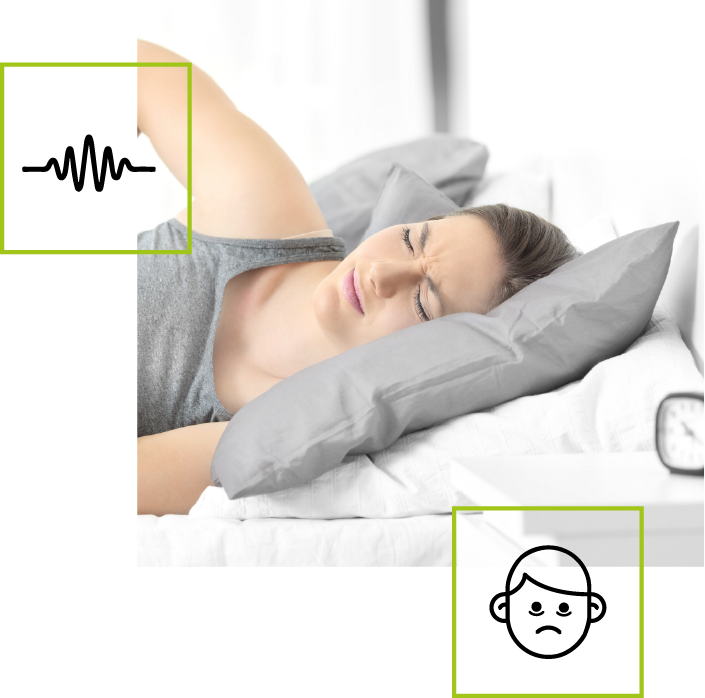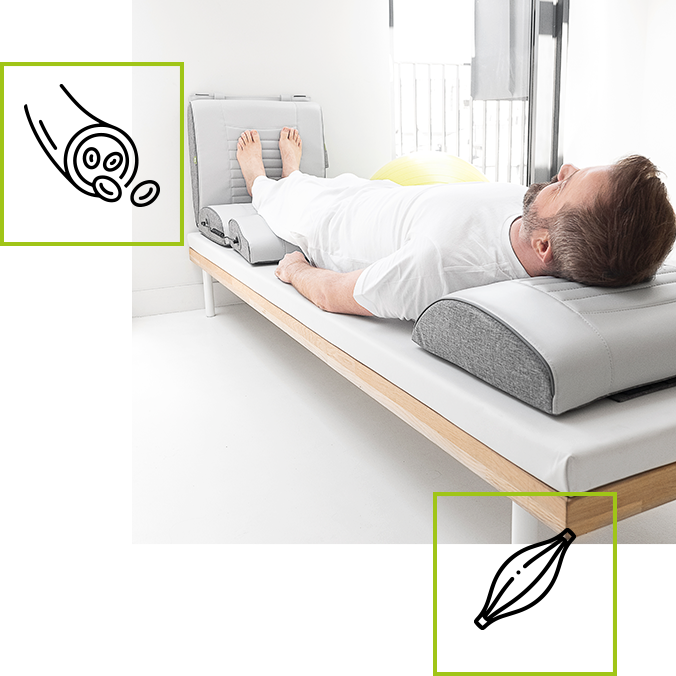Vibrotherapy supports the treatment of restless legs syndrome (RLS)
Vibrotherapy in the form of whole-body vibration (systemic) or local vibration (vibration applied to the calves) is effective in relieving the symptoms of restless legs syndrome.
How does it work?
Vibration reduces pain. They can also increase muscle flexibility and maximal muscle power. In addition, they alter tissue perfusion, increasing the flow of blood, lymph and other body fluids. All this can lead to a reduction in the symptoms of restless legs syndrome.



When and for whom?
Vibrotherapy supports pain therapy and improves sleep, and is therefore recommended in supporting the treatment of restless legs syndrome, including home treatment.
Effectiveness
Vibration therapy, such as whole-body vibration administered for two consecutive weeks (three 14-minute treatment sessions per week) or topical calf vibration administered for four consecutive weeks (three 10-minute treatment sessions per week), has been shown in scientific studies to be effective in relieving symptoms of restless legs syndrome associated with sleep problems.

Hosseini H, Kazemi M, Azimpour S. The effect of vibration on the severity of restless legs syndrome in hemodialysis patients. J Renal Inj Prev. 2016 Nov 21;6(2):113-116
Benefits of vibrotherapy

No side effects

Action confirmed by scientists and practitioners

Perceptible effects from 1 treatment

Choose the right product
Choose the right product
We will help you select a set of modules that suits your conditions.
Restless legs syndrome - RLS
One of the most common neurological complaints in Europe and North America, affecting approximately 10% of the population. It has no clearly established aetiology (possible genetic background) and may accompany other diseases (e.g. rheumatic, diabetes). The main problem in restless legs syndrome is sleep disturbance (insomnia) and consequent impairment of daytime alertness, as well as impairment of other daytime functions. The symptoms include uncontrollable movements of the limbs, a tingling sensation or pain at rest, especially at night, while the pain may subside during daily activities. The symptoms of restless legs syndrome can make everyday activities, such as driving or working in one position, difficult. Therefore, it is important not to underestimate the symptoms and, after diagnosis, to implement the correct treatment.
Restless legs syndrome symptoms
In restless legs syndrome, symptoms usually appear at night or during the day while at rest. Its symptoms cause periodic movements of the limbs which give temporary relief from the sensations of itching, burning and tingling in the lower limbs. The symptoms of the disease are worse in the evening and at night, but in extreme cases they can occur during the day, even with a short rest. Temporary relief is provided by massaging, bending or walking. Unfortunately, the discomfort only subsides for a short while and returns again at rest. The symptoms of restless legs syndrome are described in very different ways and therefore making a correct diagnosis is difficult. Some people do not even consider it an illness that can be effectively treated.
Restless legs syndrome
RLS (restless legs syndrome) is a neurological disorder and should be treated by a specialist. It is often caused by renal failure, iron deficiency, polyneuropathies of various origins and thyroid disease. The symptoms of restless legs syndrome can also be triggered by taking specific medications, withdrawal of sleep medication or alcohol or nicotine abuse. For this reason, it is important to take a very thorough history with the patient and find the cause of the appearance of specific symptoms in restless legs syndrome.
Restless legs syndrome treatment
Treatment of restless legs syndrome includes taking medication prescribed by a specialist. Dopaminergic and antiepileptic drugs are recommended. These are substances for which it is necessary to be under the constant supervision of a specialist. The symptoms of RLS also disappear or decrease when the patient takes preparations containing iron, magnesium and B vitamins. However, these are preparations that should also be prescribed by a doctor and should not be taken on one's own. The use of drugs and various supportive substances without the knowledge of a general practitioner or specialist makes correct diagnosis difficult. It often makes it impossible to determine whether there is an underlying disease that causes rls or whether the patient is suffering from idiopathic restless legs syndrome.
Restless legs syndrome home treatment
Treatment of restless legs syndrome also includes home methods to help minimise symptoms and improve patients' wellbeing. Among the basic home methods we can include changes in diet and lifestyle. The diet for RLS should be rich in iron and B vitamins, supply the body with magnesium and potassium in natural form. Introducing exercise into the daily routine and limiting stimulants such as tobacco and alcohol have a positive effect. Good sleep hygiene and a regular lifestyle also have a positive effect. For severe pain caused by rls, physical therapy also has a positive effect. This can include leg massages, stretching exercises or vibrotherapy, which has a proven analgesic effect. The use of vibrotherapy relieves pain and promotes inflammation relief. Therapeutic vibrations relax muscles and combat excessive tension and strengthen them reducing even chronic pain.





